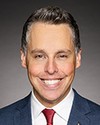I call this meeting to order.
Welcome to meeting number 118 of the House of Commons Standing Committee on Transport, Infrastructure and Communities.
Pursuant to Standing Order 108(2) and the motion adopted by the committee on Tuesday, April 16, 2024, the committee is commencing its study of the Competition Act and air travel in northern, rural and remote communities.
Before we begin, I'd like to remind all members and other meeting participants in the room of the following important preventative measures.
To prevent disruptive and potentially harmful audio feedback incidents that can cause injuries, all in-person participants are reminded to keep their earpieces away from the microphones at all times.
As indicated in the communiqué from the Speaker to all members on Monday, April 29, the following measures have been taken to help prevent audio feedback incidents: All earpieces have been replaced by a model that greatly reduces the probability of audio feedback. These new earpieces are black in colour, whereas the former earpieces were gray. Please only use the approved black earpieces. By default, all unused earpieces will be unplugged at the start of the meeting. When you're not using your earpiece, please place it face down in the middle of the sticker for this purpose that you will find on the table as indicated. Please consult the cards on the table for guidelines to prevent audio feedback incidents.
The room layout has been adjusted to increase the distance between microphones and reduce the chance of feedback from an ambient earpiece. These measures are in place so that we can conduct our business without interruption and protect the health and safety of all participants, including our interpreters.
Today's meeting is taking place in a hybrid format. In accordance with the committee's routine motion concerning connection tests for witnesses, I'd like to inform all members that the witnesses have completed the required connection tests in advance of the meeting.
With that, colleagues, I'd like to now welcome our witnesses.
Appearing before us from Air North is Mr. Joseph Sparling, president, by video conference.
Welcome to you, sir.
From Canadian North Inc., we have Shelly De Caria, president and chief executive officer.
Welcome to you.
We also have Mr. Purich, who's not on my list. We are very much grateful for your presence here, sir.
From Northern Air Transport Association, we have Mr. Bernard Gervais, executive director, by video conference. Welcome to you, sir.
From the Town of Smithers, we have Gladys Atrill, mayor, by video conference. Welcome to you, Mayor.
Finally, we have Daniel Côté, president, Air Transport Committee, and Marie‑Dominique Giguère, project manager from the Union des municipalités du Québec.
Welcome to you both.
Mr. Sparling, please make your opening remarks. You have five minutes, sir.



